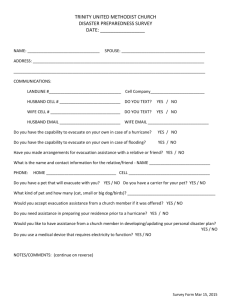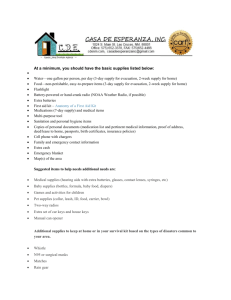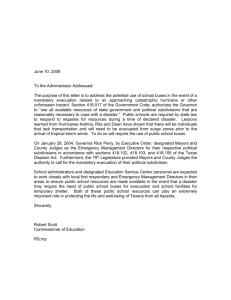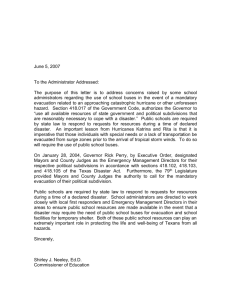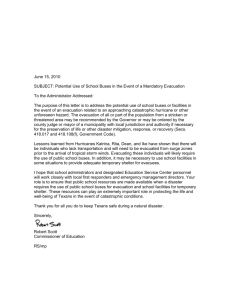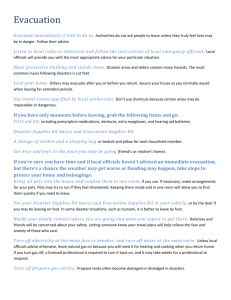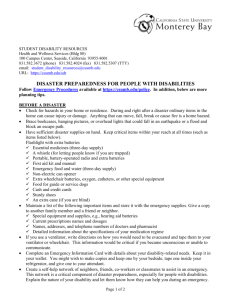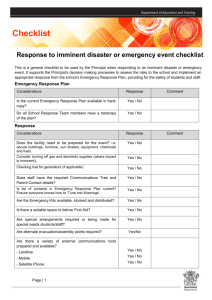How to perform your own tabletop OB disaster exercise
advertisement
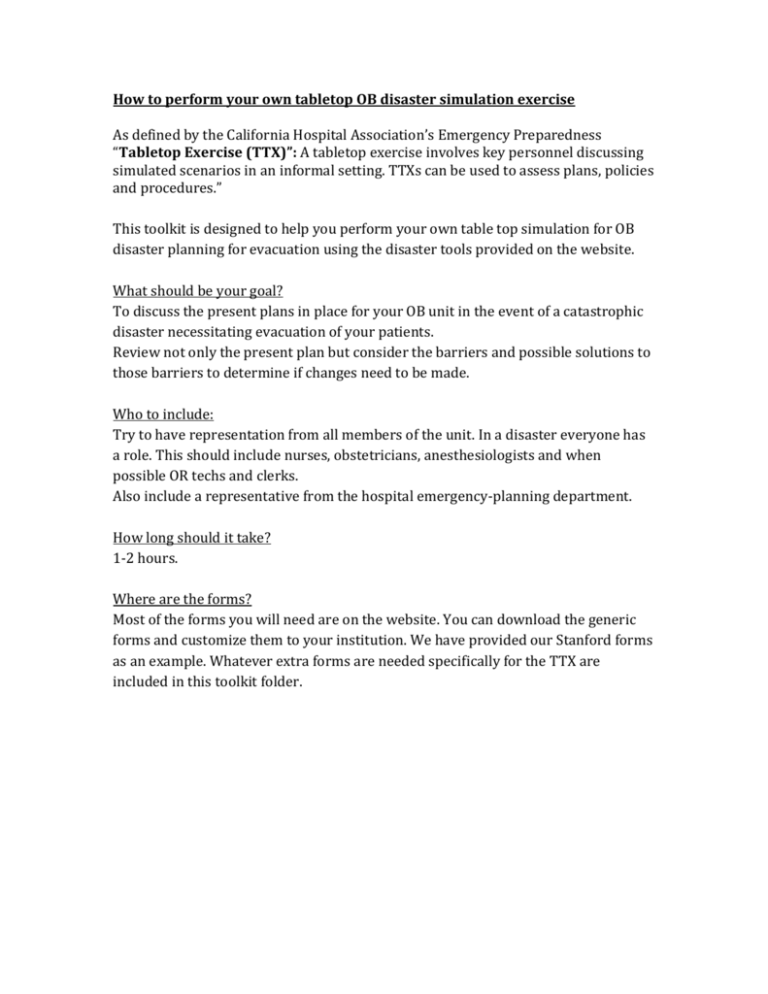
How to perform your own tabletop OB disaster simulation exercise As defined by the California Hospital Association’s Emergency Preparedness “Tabletop Exercise (TTX)”: A tabletop exercise involves key personnel discussing simulated scenarios in an informal setting. TTXs can be used to assess plans, policies and procedures.” This toolkit is designed to help you perform your own table top simulation for OB disaster planning for evacuation using the disaster tools provided on the website. What should be your goal? To discuss the present plans in place for your OB unit in the event of a catastrophic disaster necessitating evacuation of your patients. Review not only the present plan but consider the barriers and possible solutions to those barriers to determine if changes need to be made. Who to include: Try to have representation from all members of the unit. In a disaster everyone has a role. This should include nurses, obstetricians, anesthesiologists and when possible OR techs and clerks. Also include a representative from the hospital emergency-planning department. How long should it take? 1-2 hours. Where are the forms? Most of the forms you will need are on the website. You can download the generic forms and customize them to your institution. We have provided our Stanford forms as an example. Whatever extra forms are needed specifically for the TTX are included in this toolkit folder. OB disaster tabletop simulation- Evacuation scenario Begin with a review of your present disaster plan. Followed by presenting a scenario. It is 4 am and an 8.0 earthquake(tornado) has hit your hospital . You have extensive damage and you must evacuate your entire OB unit. 1. Begin by assigning the roles and distributing the job action sheets (you may not have enough team members for all the roles so some team members may have to perform more than 1 role). The yellow highlighted tasks may be adequate for the tabletop exercise depending on the time allotted. 2. Consider assigning a team member as the “Command Center” to which you will report damage, receive orders for evacuation and discuss evacuation needs. 3. Work through the job action sheets. 4. Perform the room damage assessment as provided on the patient descriptions. 5. Care for any urgent issues if present. - Decide if the room damage described for each patient will necessitate moving her urgently. Where will you move them to? 6. Triage all the patients using OB TRAIN -Use the provided “patients” descriptions to perform OB TRAIN. 7. Decide what local hospital you will send each patient, based on the maternity and pediatric level of care needed. If time permits: 8. Consider filling out the Evacuation orders and history form that will be going with the patient to the receiving hospital. 9. Practice using the Med sled if available. Things to discuss: 1. If this happens on the weekend or in the middle of the night, who will be on the unit to assume the various roles? Avoid assigning roles to people who will have to come in from home. 2. What is your plan for family members in the room? What if they are off the until in the cafeteria for example. 3. Consider where you will be cohorting your rapid discharge patients in your hospital as they are awaiting discharge. 4. How will you communicate with the command center if the phone lines are not working? 5. Where will you evacuate to horizontally and or vertically within your hospital? 6. Where will you evacuate to outside of your hospital? 7. How will you be assured to have the equipment you need to do a delivery in the parking lot? 8. How are you tracking patient evacuation? 9. How can you assure mom and baby stay together? 10. How can you assure mom’s medical records will arrive with her to the receiving hospital? 11. Who will arrange for transfer of your patients to other hospitals? 12. Are you knowledgeable about the level of care that can be provided for mom or baby at your neighboring hospitals?

